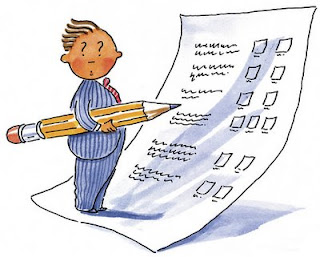- A project based learning method is a comprehensive approach to instruction.
- Project-based multimedia learning is a method of teaching in which students acquire new knowledge and skills in the course of designing, planning, and producing a multimedia product.
The effective use of
multimedia learning project requires:
- Clarifying goals and objectives
- Determining how much time is needed
- Extent of students’ involvement in decision making
- Setting up forms of collaboration
- Identifying and determining what resources are needed Learning
Another important thing
is to determine the resources available from:
- Library Materials
- Community Resources both material and human
- Internet
- News Media
- Use technology students already know.
- Use time outside of class wherever possible.
- Assign skills, practice, as homework.
- Use “special” classes as extra time.
- Let students compose text and
Various Phases of the
Project
1.
Create project
description and milestone.
· Describe your project in forty (40) words or less
· Include
instructional goals and objectives
· Include
the project components students will be responsible for and their due date.
2. Work with the real -
world connection.
· If
you have people outside the classroom involved as clients or assessors (evaluators) work with them to make an appropriate schedule and include their
ideas for activities.
3. Prepare Resources.
· Seek
the assistance of your librarian or school media specialist.
4.
Prepare software and
peripherals such as microphones
· Ask
the help of technical people.
5. Organize Computer
Files
· Finding
files eats most of your time if you are not organized.
- Naming files and folders after their file type and section title helps to keep things organized and makes it easier to merge elements later on.
6. Prepare the
Classroom.
· Organize
books, printer papers and any other resources so students can access them
independently.
· Make
room on the bulletin boards for hanging printouts of student work, schedules,
and organizational charts.
Introducing The Project
(One or Two Days)
Help
the students develop a “big picture” to understand the work ahead. Make sure
what they will be making, who their audience will be and what you expect them
to learn and demonstrate in terms of the K to 12 Standards and Competencies.
1. Review project
documents. You can ask students to work with the project documents
you have produced. Encourage your students to ask questions about the project
to clarify what you have written.
2. Perform
Pre-Assessments. Your students can write pre-assessment questions
based on your learning goals to further clarify expectations.
3. Perform
Relevant Activities. You can show students anything you can find
that is similar to what they will be
producing such as a Web site or your own mini project you did to learn the
technology. You can also brainstorm for topics, organizational ideas and design
ideas.
4. Group Students.
Form small student groups from three to five students per group. Here are some
grouping strategies:
- By topic interest
- By student talent and expertise - This works for a balance of talents and skills in the groups.
- By student choice
- Randomly - This is fine to enable them to develop the skills to work with others.
5. Organize Materials.
Give each group a folder that stays in the classroom. All their group work such
as storyboards, group journals, and research notes goes in that folder.
Learning The Technology
(One to Three Days)
- Give a chance for the students to work with whatever software and technology they will be using. If some students are already familiar with the tools and processes, ask them to help you train the others. If students are new to multimedia, then begin with lessons that involve using the different media types. Remember, you and your students are colearners and you both learn as you go.
Preliminary Research and
Planning (Three Days to Three Weeks, depending on Project Size)
- At this stage, students should immerse themselves in the content or subject matter they need to understand to create their presentations.
- Students can tag and collect information they think might be valuable for their presentations: compelling photographs, quotes, sounds and other media they encounter in their research.
Concept Design and Story
boarding
- Process of organizing a presentation that is useful to the audience. Storyboard: is a paper-and-pencil sketch of the entire presentation, screen by screen, or in the case of video, shot by shot.
Here are a few design
tips to keep in mind throughout story boarding and production:
- Use scanned , handmade artwork to make a project look personal and to manage scarce technology resources
- Keep navigation
- Organize information similarly throughout so users can find what they are looking for
- Care for collaboration
- Organize manageable steps
- Check and asses often
Assessing, testing and
finalizing presentations (one to three weeks)- There are two kinds of testing
to think about
Functional Testing- Trying all the buttons, taking all
possible paths thru the presentation, checking for errors, missing images and
the like
User- Testing- Showing the presentation to members
of the target audience and finding out if they can successfully navigate it and
understand it.
* Assessment means
critical evaluation of your presentation.
Concluding activities
(one to three days)
Allow time
for students to present and show off their hard work.Often there is an obvious,
authentic concluding activity related to your real- world connection.Remember
to take time to review the ups and downs of the project with students and
anyone else who participated.
















Walang komento:
Mag-post ng isang Komento